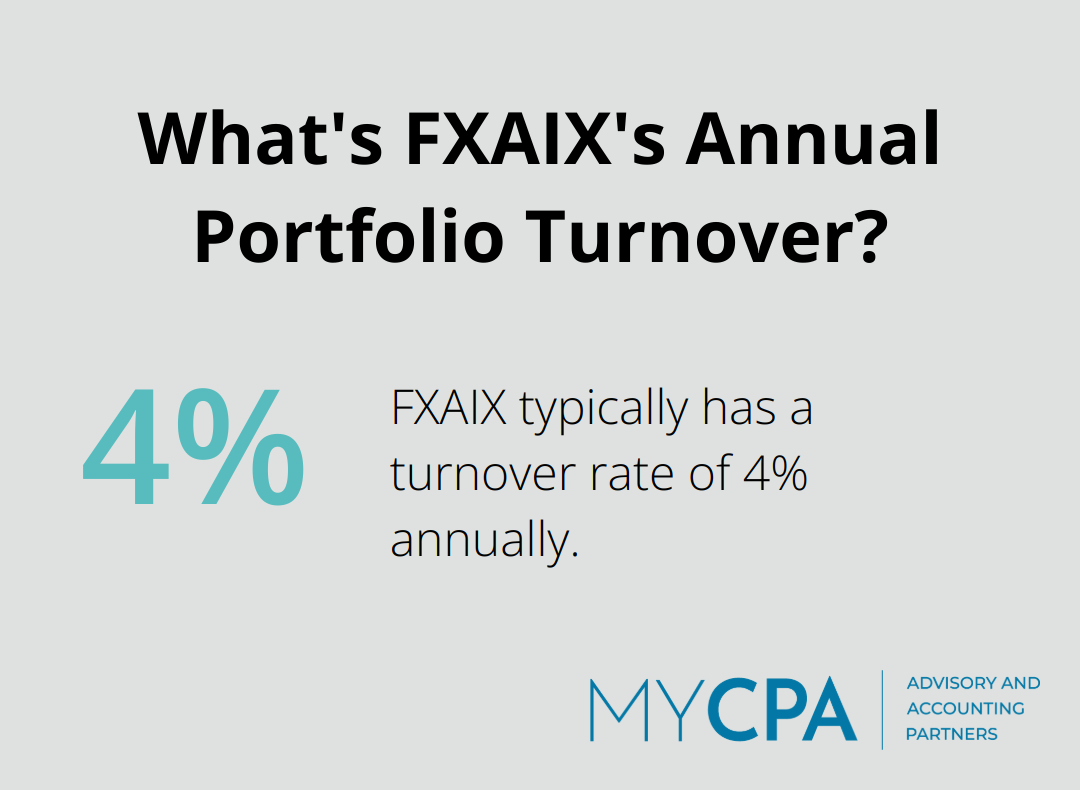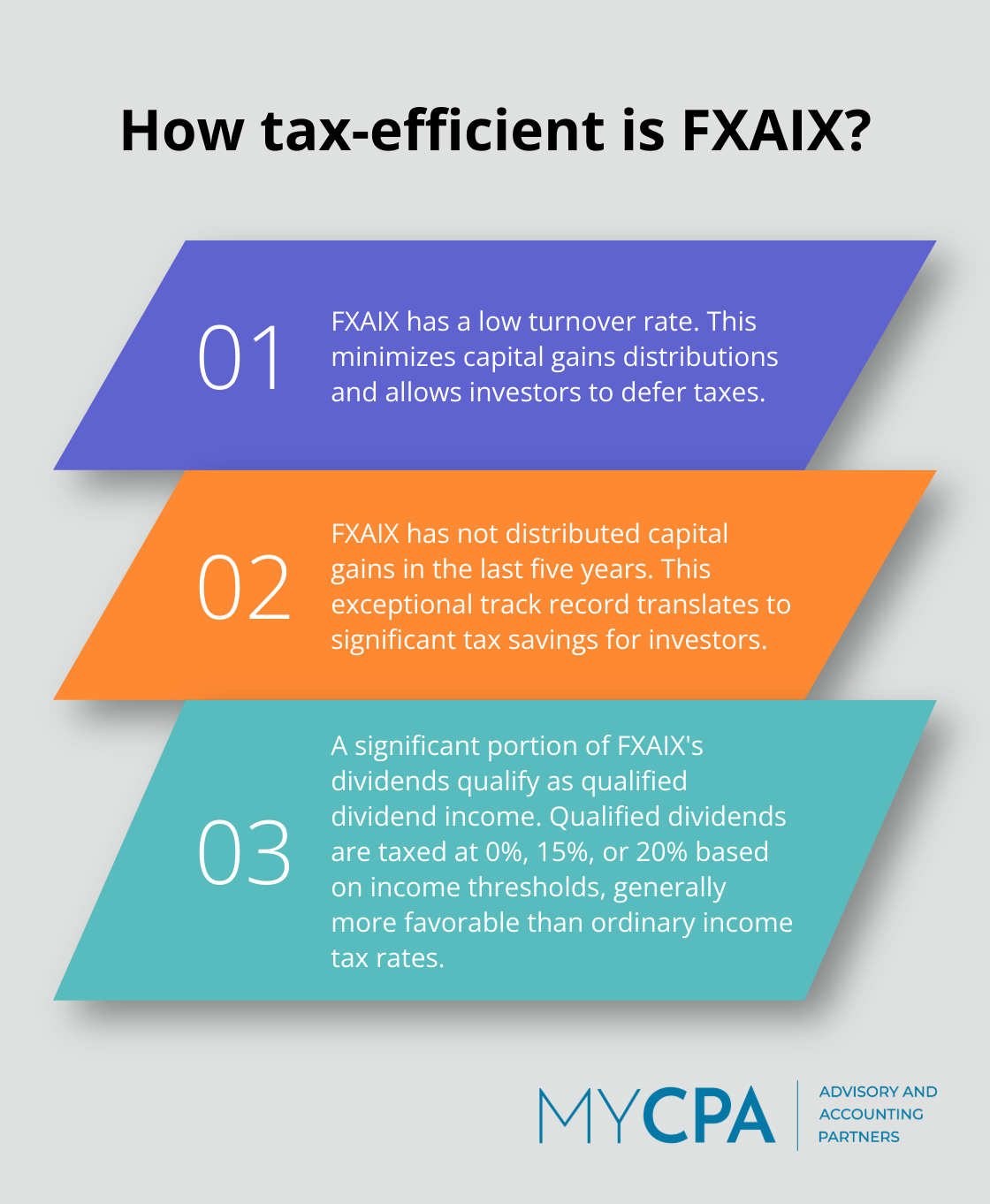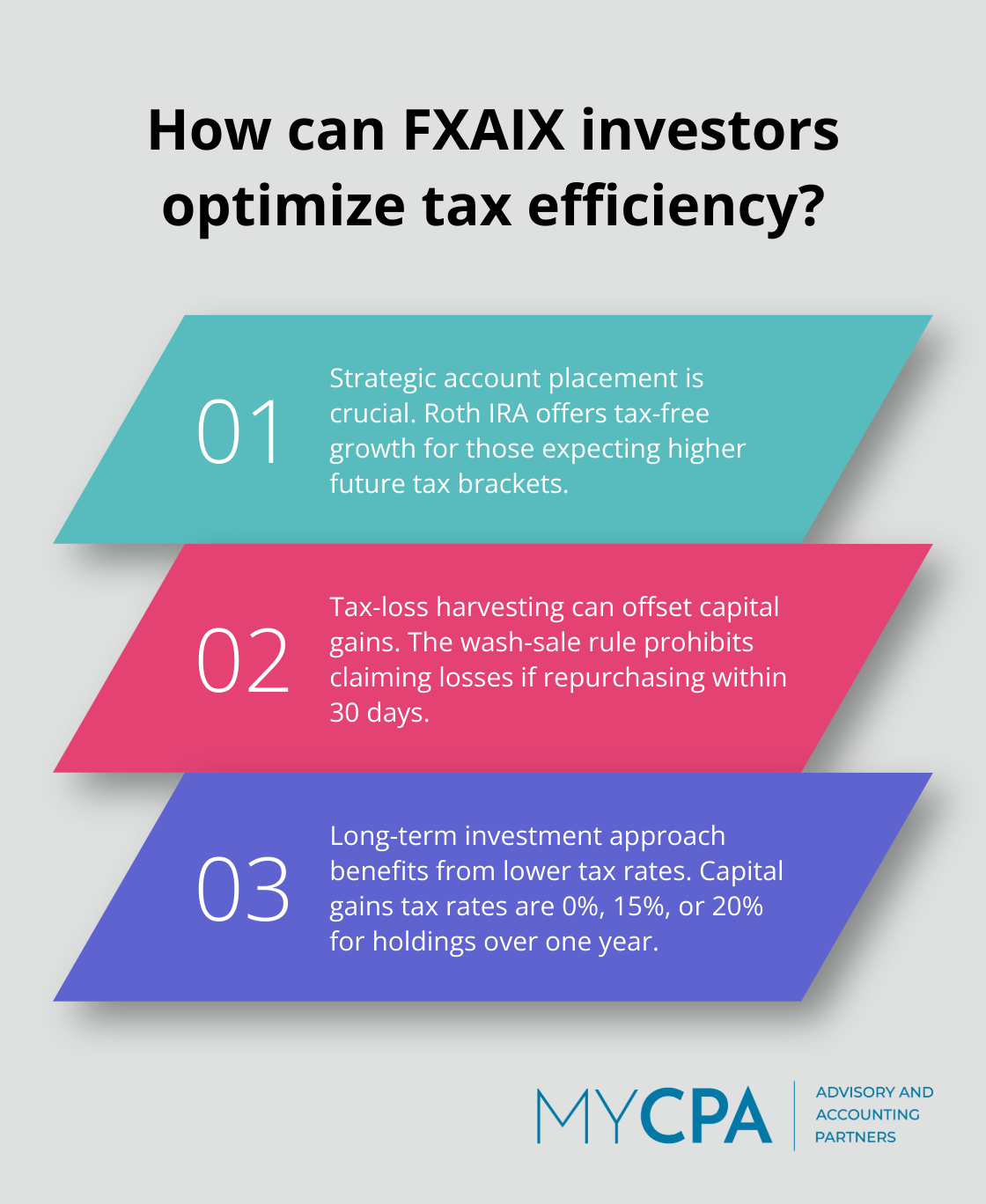
At My CPA Advisory and Accounting Partners, we often field questions about the tax efficiency of popular investment options. One fund that frequently comes up in these discussions is FXAIX, the Fidelity 500 Index Fund.
In this post, we’ll explore FXAIX’s tax efficiency and provide insights to help investors make informed decisions. We’ll examine the fund’s structure, its tax implications, and strategies to potentially maximize its tax benefits.
FXAIX, the Fidelity 500 Index Fund, tries to mirror the performance of the S&P 500 index. This fund offers investors exposure to 500 of the largest U.S. companies, providing a broad representation of the U.S. stock market.
FXAIX operates as a mutual fund, pooling money from multiple investors to purchase a diversified portfolio of stocks. Unlike actively managed funds, FXAIX employs passive management. This approach results in low costs, with an expense ratio of 0.02%.
The fund’s primary objective mirrors the performance of the S&P 500 index. It accomplishes this by holding stocks in the same proportion as they appear in the index. This strategy leads to a low turnover rate (typically around 4% annually). The low turnover contributes significantly to the fund’s tax efficiency by minimizing capital gains distributions.
FXAIX stands out among S&P 500 index funds for its low expense ratio. For comparison, the Vanguard S&P 500 ETF (VOO) has an expense ratio of 0.03% (higher than that of FXAIX). However, ETFs like VOO offer intraday trading flexibility, which FXAIX, as a mutual fund, does not provide.

Performance-wise, FXAIX has closely tracked the S&P 500, with a 10-year annualized return of 13.04% (as of our last data point). This performance aligns closely with its peers, as expected for index funds tracking the same benchmark.
FXAIX presents an attractive option for investors seeking a low-cost, tax-efficient way to gain broad market exposure. Its combination of minimal fees, low turnover, and consistent performance appeals to many long-term investors. However, investors should weigh these benefits against their specific financial goals and risk tolerance.
As we move forward, we’ll examine the tax implications of investing in FXAIX and explore strategies to maximize its potential tax benefits.
FXAIX, the Fidelity 500 Index Fund, offers investors a highly tax-efficient investment option. Its structure and management approach contribute to the minimization of tax liabilities. This chapter explores the key factors that make FXAIX tax-efficient and the implications for investment strategies.
The primary driver of FXAIX’s tax efficiency is its remarkably low turnover rate. ETFs can be more tax efficient compared to traditional mutual funds. Generally, holding an ETF in a taxable account will generate less tax liabilities. This low turnover results from the fund’s passive management strategy, which mirrors the S&P 500 index rather than actively trades stocks.

The impact of this low turnover on taxes is substantial. When a fund frequently buys and sells securities, it generates capital gains that must be distributed to shareholders, who then owe taxes on these distributions. FXAIX’s approach minimizes these distributions, which allows investors to defer taxes and potentially benefit from long-term capital gains rates when they eventually sell their shares.
FXAIX’s history of capital gains distributions further underscores its tax efficiency. Over the past decade, the fund has made minimal capital gains distributions. In fact, FXAIX has not distributed any capital gains in the last five years (according to Fidelity’s records). This track record is exceptional, even among index funds, and translates to significant tax savings for investors.
For comparison, many actively managed funds distribute capital gains annually, sometimes amounting to several percent of the fund’s net asset value. These distributions can result in unexpected tax bills, especially for investors in higher tax brackets. FXAIX’s ability to avoid such distributions enhances its appeal for tax-conscious investors.
While FXAIX’s primary focus is on capital appreciation, it does generate dividend income. The tax implications of these dividends are generally favorable due to the nature of the fund’s holdings. A significant portion of FXAIX’s dividend distributions typically qualifies for treatment as qualified dividend income (QDI).
Qualified dividends are taxed at a rate of 0% for taxable incomes under $47,025, 15% for incomes $47,026 to $518,900, and 20% for incomes above that threshold. This is generally more favorable than ordinary income tax rates.
The tax advantages of FXAIX’s dividend structure can lead to meaningful savings for investors, especially those in higher tax brackets. However, it’s important to note that the exact tax implications depend on individual circumstances and current tax laws.
FXAIX’s tax efficiency stems from its low turnover, minimal capital gains distributions, and favorable dividend tax treatment. These factors combine to create a compelling option for investors who seek to minimize their tax burden while gaining broad market exposure. The next chapter will explore strategies to maximize the tax benefits of investing in FXAIX.
Investors should carefully consider where they hold their FXAIX shares to optimize tax efficiency. Placing FXAIX in a tax-advantaged account can reduce tax burden. A Roth IRA is a tax-advantaged retirement account where you make after-tax contributions. This strategy benefits those who expect to be in a higher tax bracket in the future.

For investors in high tax brackets now, a traditional IRA or 401(k) might be preferable. This approach defers taxes on investments until retirement, when the investor might be in a lower tax bracket. However, required minimum distributions (RMDs) apply to these accounts at age 72.
Investors can enhance their overall portfolio’s tax efficiency through tax-loss harvesting. This strategy involves selling investments that have declined in value to offset capital gains from other investments. For example, losses in other parts of the portfolio could offset any capital gains distributions from FXAIX or gains from selling FXAIX shares.
The wash-sale rule prohibits claiming a loss on a security if the investor buys the same or a “substantially identical” security within 30 days before or after the sale. ETFs avoid the wash-sale rule because they are often tied to an index and not a “substantially identical” security. Investors who sell FXAIX for tax-loss harvesting should wait at least 31 days before repurchasing it (or consider investing in a different but similar fund during this period).
A long-term investment strategy with FXAIX can significantly improve its tax efficiency. Holding FXAIX shares for more than a year allows any capital gains from selling to be taxed at the lower long-term capital gains rate rather than the higher short-term rate. Currently, long-term capital gains rates are 0%, 15%, or 20% (depending on income level), compared to short-term gains which are taxed as ordinary income.
This approach aligns well with FXAIX’s nature as an index fund. The S&P 500 has historically trended upward over long periods, despite short-term fluctuations. Maintaining the investment through market cycles not only potentially benefits from this long-term growth but also minimizes taxable events from frequent trading.
Implementing these strategies effectively often requires professional expertise. A qualified financial advisor or tax professional can help tailor these approaches to an individual’s specific financial situation. They can provide guidance on the most tax-efficient investment strategies, taking into account factors such as income level, investment goals, and risk tolerance.
FXAIX offers investors a tax-efficient option for broad market exposure. Its low turnover rate and minimal capital gains distributions contribute to its appeal for tax-conscious investors. These features, combined with its low expense ratio, make FXAIX an attractive choice for long-term wealth accumulation.

Investors should weigh FXAIX’s tax efficiency against their overall financial goals and risk tolerance. The decision to invest in FXAIX should align with an individual’s investment timeline, income level, and retirement planning objectives. Implementing tax-efficient strategies effectively requires careful planning and consideration of individual circumstances.
At My CPA Advisory and Accounting Partners, we help investors make informed decisions about tax-efficient investments like FXAIX. Our team of experts provides tailored advice on integrating FXAIX into your investment strategy while optimizing your tax position. We develop personalized solutions that align with your financial goals (considering your entire financial picture).








Privacy Policy | Terms & Conditions | Powered by Cajabra